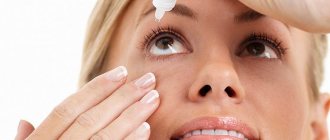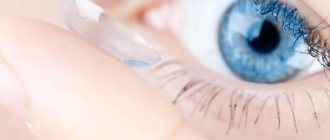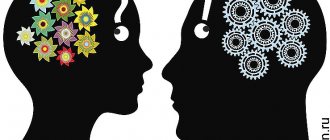Translated from Latin, the word placebo means “to please.” And the meaning of this effect is that a person experiences an improvement in well-being by taking substances without drugs and without knowing it.
In other words, if the patient believes that the pills will benefit him - because the doctor said so - then he will begin to get better.
Not only suggestible people are susceptible to the placebo effect, as one might think. Even after learning during treatment that the drug he is taking is a “dummy”, the patient can still continue to feel better.
Placebos are not just pills
Physical exercises prescribed by a doctor, but not directly affecting the damaged organs, can also act as a miracle cure.
There are cases when, instead of performing an operation, surgeons only made an incision in the skin and informed the patient that everything was done. The placebo effect worked here too.
And those who have been in the hospital know how much easier it becomes after the doctor’s morning rounds. The specialist did not take any action other than the survey, but the doctor’s attention alone causes a placebo effect.
Of course, this effect alone cannot completely heal the patient. Real medications are necessary. But a significant improvement in well-being is observed in no less than a third of cases when performing actions that, it would seem, do not directly lead to a cure.
Who was the first to discover the placebo effect?
In medicine, this term was used already in the 18th century - the placebo effect was talked about when a medicine was selected to calm the patient, and not to cure. But positive changes were observed.
Of course, medicine in those distant times was not nearly as developed as it is now, and placebos were considered a “necessary lie.” Doctors of the 18th century can be justified: they often had no information about how to treat a particular disease, and the placebo effect was in effect.
In 1953, the placebo effect was first brought to scientific attention, and this case is now a textbook case. Psychiatrist E. Mendel worked with aggressive immigrants from the Virgin Islands and Puerto Rico, some of whom had to be kept in straitjackets.
The managers of the hospital where Mendel worked decided to use one of the tranquilizers developed by that time. But why not do research? Some patients took a real tranquilizer, while others just took sweet pills without any effect. Not even all the doctors knew who was getting the “dummies.”
A few months later, Mendel came to the conclusion that his patients had become much calmer and he could communicate with them without fear. The doctor attributed these changes to the medication.
Imagine Mendel’s surprise when he learned that it was his students who had been taking the “dummy” all this time!..
The psychiatrist analyzed the situation and concluded that his kind attitude and faith in patients, as well as stories about the effectiveness of the drug, played a role.
From that moment on, the scientific community started talking about the placebo effect, but this phenomenon received its name only in 1995. It was then that the American doctor Henry Beecher discovered that a third of patients were cured (or approaching a healthy state) after taking “pacifiers.”
Placebo
Asbjørn Hróbjartsson and Peter Gotzsche published a study in 2001, and subsequent studies in 2004, 20) which questioned the nature of the placebo effect. The studies were conducted in two meta-analyses. They found that in studies with a binary outcome, that is, where the outcome was classified as improvement or no improvement, the placebo group showed no statistically significant improvement compared with the no-treatment group. Likewise, no significant placebo effect was observed in studies in which objective data (such as blood pressure) were measured by an independent observer. The placebo effect can only be documented in studies in which the results (improvement or non-improvement) were self-reported by the subjects. The authors concluded that the placebo effect did not have “powerful clinical effects” (objective effects) and that patient-reported improvements (subjective effects) in pain were small and could not be clearly distinguished from reporting bias. Other researchers (Wampold et al.) reanalyzed the data from the 2001 meta-analysis and concluded that the placebo effect on objective symptom measures is comparable to the placebo effect on subjective measures and that the placebo effect may exceed the effect of active treatment by 20% in diseases susceptible to the placebo effect. Another group of researchers noted strikingly different conclusions between the two groups of authors, despite nearly identical meta-analytic results, and suggested that the placebo effect was indeed significant but small in magnitude. 21) The conclusion of Hróbjartsson and Gotzsche has been criticized for several reasons. Their meta-analysis covered studies in a highly mixed group of conditions. It has been reported that for measurements in peripheral organs, the placebo effect appears to be more effective in achieving improvements in physical parameters (such as reduction in hypertension, improvement in FEV1 in patients with bronchial asthma, or reduction in prostatic hyperplasia or anal fissure) than in improving biochemical parameters ( such as cholesterol or cortisol) in various diseases such as venous leg ulcers, Crohn's disease, urinary tract infections and chronic heart failure. Placebos also don't work as well in clinical trials because patients don't know whether they're getting the real treatment or a dummy one. When placebo studies are conducted in which people think they are receiving the actual treatment (not just the possibility of it), the placebo effect is observed. Other authors argue that the placebo effect can be reliably demonstrated under appropriate conditions. Another publication by Hróbjartsson and Gotzsche, published in 2010 as a systematic review by the Cochrane Collaboration, confirms and modifies their previous work. The meta-analysis included more than 200 trials investigating 60 clinical conditions. Placebo interventions again failed to show important clinical effects overall, but may have influenced patient-reported outcomes in some situations, particularly pain and nausea, although it was "difficult to distinguish patient-reported placebo effects from response bias." The pooled relative risk they calculated for placebo was 0.93 (only a 7% effect), but significant. Effects were also found for phobia and asthma, but were imprecise due to the high risk of bias. In other conditions involving three or more trials, no statistically significant effect was found for smoking, dementia, depression, obesity, hypertension, insomnia and anxiety, although the confidence intervals were wide. Several clinical (physical placebos, patient outcomes, misinformation to patients that there was no placebo) and methodological (small sample size, explicit purpose of studying the placebo effect) factors were associated with higher placebo effects. Despite the overall low effects and risk of bias, the authors acknowledged that there may be a strong placebo effect in certain situations. 22) In 2013, Jeremy Howick and colleagues used data from Hróbjartsson and Gotzsche to compare the size of the placebo effect with the size of the treatment effect. They found a statistically significant difference between the size of the placebo effect and the treatment effect in trials with binary outcomes, but not in trials with subjective outcomes.
How does the placebo effect work?
The placebo effect is based on psychosomatics: the patient believes in the effectiveness of the drugs, and his body begins to produce substances that promote healing.
Interestingly, a lot depends on the drugs themselves. For example, the placebo effect is more pronounced if the tablet is large in shape and bright in color. A strong brand is also important. So, if we are not talking about “dummies”, but about real medicines, patients feel a more lasting improvement when taking drugs from well-known companies. In addition, it has been observed that people tend to trust familiar manufacturers more strongly.
The placebo effect is used to relieve pain syndromes, to cure insomnia, headaches and colds, to combat rheumatism and seasickness.
Of course, competent doctors will never resort to using the placebo effect in cases where healing can be achieved using conventional methods. But sometimes - say, if you are intolerant to certain drugs - doctors have no other choice.
The placebo effect works even if a person knows they are taking a pacifier
The placebo effect is usually called the phenomenon of improvement in a person’s well-being in the case when this person believes in the effectiveness of the positive effects of a certain drug or procedure on his body.
Typically, the degree of manifestation of the placebo effect depends on the suggestibility of the person and various circumstances associated with taking the drug or performing the procedure. Placebo is also a name for a substance without medicinal properties, which, nevertheless, has a positive effect on the well-being of a person who believes that this substance is a medicine. Previously, it was believed that the placebo effect only occurs if a person does not know that the drug he is taking is a dummy and not a real medicine. Now there is evidence that placebos have a positive effect on a person’s well-being, even if he knows about the “fraud.” The results of a medical study with this conclusion were recently published in the authoritative medical journal Pain. “The study results provide insight into the impact of placebo,” said study co-author Ted Kaptchuk. He works at Beth Israel Deaconess Medical Center and also teaches medicine at Harvard. “The new study shows that the placebo effect is not always caused by patients believing that they are taking an effective drug, as previously thought,” Kaptchuk said.
Taking a pacifier that the patient knows is a pacifier appears to stimulate areas of the brain that are responsible for part of the symptomatic picture of a disease.
The results of the work were obtained during a large medical experiment involving 97 patients with chronic low back pain (lumbago). The main causes of lumbago are overstrain of the lumbar region, lumbar hernias, vertebral displacement or congenital anomalies of the vertebrae. The causes of severe sudden lumbago, which can occur in a person while bending or lifting weights, are usually a displaced intervertebral disc, or significant tension in the muscles and ligaments of the back.
The volunteers were checked by doctors, confirming the previously made diagnosis. After this, the experiment participants were told about the placebo. The lecture took about 15 minutes. After this, the group was divided into two parts. The first received traditional treatment, and the second received the same treatment and placebo.
The overwhelming number of volunteers, about 85%, were already taking various medications before participating in the project. In most cases, this medication was an anti-inflammatory drug that did not contain steroids. Those patients who were treated with opioid drugs were not allowed to participate in the experiment.
Both groups of subjects took new medications and tried to maintain their previous lifestyle, including physical activity, rest, and medications used. The dosages of medications did not change, the medications themselves also remained the same, and the participants in the experiment were asked not to change them.
The most interesting thing is that the participants in the “placebo group” received bottles with a known placebo. They were warned about this right away, plus “placebo pills” were written on the bottle itself. It was also indicated on the bottle that the tablets consist of crystalline cellulose, which has virtually no effect on the human body. Volunteers took these tablets twice a day.
The duration of the experiment was three weeks. After this, participants in the first and second groups were surveyed, asking how people’s well-being had changed. 30% of participants in the “placebo group” reported improved health. This concerned both the pain they experienced constantly and the maximum level of pain they experienced. In the group that took the real drug, 9% of participants reported a decrease in chronic pain levels, while 16% of participants reported a decrease in maximum pain levels.
“This is the effect that comes from the treatment process itself: communication with a doctor or nurse, taking pills, daily rituals and symbols of our healthcare system. The body reacts to this,” says Kaptchuk.
“We have proven that the placebo effect works without cheating,” says another member of the research team. “Patients are interested in what will happen next, and they begin to delve into their feelings. Their health is improving."
According to the authors of the project, the placebo effect can work in cases of some chronic diseases, depression and neuroses. But a placebo will never be able to reduce, for example, the size of a cancerous tumor or cure a disease of the cardiovascular system. “It's not a panacea, but most people feel better. Our research shows that placebos should not be underestimated. Perhaps medicine needs a placebo,” said Kaptchuk.
The authors of the project believe that without trust in your doctor or the healthcare system as a whole, placebos will not work.
Nocebo effect: reverse effect
The nocebo effect, the opposite of placebo, is said to occur when patients are told that a “dummy” has a number of harmful or dangerous properties. For example, people with lactose intolerance are given a harmless drug, but they note that it contains lactose. Almost half of the subjects showed gastrointestinal disorders that would have occurred if they had actually taken a lactose-containing drug.
This group also includes cases when a person, having believed that he is suffering from some disease, begins to actually experience its symptoms.









